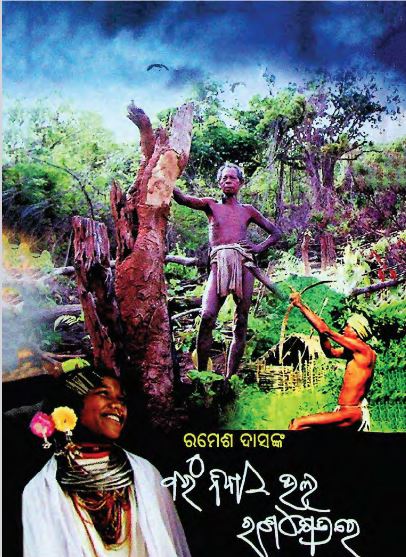Baram Nibasa Bhala Ranakshetrare, an Odia drama book penned by Rames Das and published in 2012, stands as an extraordinary contribution to contemporary Odia literature. The work is distinguished by its multi-layered narrative structure, which elegantly intertwines sub-drama, saciety, and humanity. In doing so, it not only challenges conventional dramatic forms but also creates an immersive experience for the reader by exploring various shades of human existence in a profound, yet accessible manner.
At its core, the book reveals a rich array of sub-dramas—smaller, self-contained narratives interlaced within the main storyline. Each sub-drama brings its own distinct flavor and perspective, allowing the author to delve into nuanced character studies, varied social settings, and conflicting ideologies. Through these carefully crafted narrative fragments, Rames Das invites audiences to perceive the complexity of life, where multiple storylines often converge and diverge, reflecting the unpredictable nature of human destiny. This structuring not only enhances the dramatic tension but also deepens the thematic resonance of the overall work.
Saciety in this context is interpreted as an abundant spawn of creative expression and intellectual fulfillment. Rames Das fills every corner of his drama with lush details and vivid imagery that evoke a sense of fullness—a fullness that is both satisfying and enriching for the reader’s soul. The strength of his prose lies not merely in the narrative’s entertainment value, but in its capacity to serve as a banquet for the senses and intellect. The dialogues, metaphors, and soliloquies resonate with a quality that suggests a well-nourished spirit, one that draws from tradition while simultaneously embracing modern influences. This celebration of artistic saciety allows the drama to evoke an emotional intensity that leaves its audiences both contemplative and inspired.
Humanity is another pivotal theme running through Baram Nibasa Bhala Ranakshetrare. The play approaches human relationships, social conflicts, and moral dilemmas with a sincere empathy and a deep understanding of the human condition. Rames Das portrays his characters with a keen sensitivity to their inner lives, revealing vulnerabilities, aspirations, and the complex interplay of hope and despair. The narrative does not shy away from confronting societal challenges, but rather presents them as integral aspects of human experience. In doing so, it invites the audience to reflect on their own lives and the broader cultural and ethical environments in which they exist. Whether through moments of levity or instances of poignant struggle, the drama champions a vision of humanity that is resilient, compassionate, and ever-evolving.
In summary, Baram Nibasa Bhala Ranakshetrare is not merely a dramatic work; it is a celebration of storytelling that skillfully blends multiple narrative layers. By embracing the concept of sub-drama, Rames Das masterfully interweaves various human experiences into a cohesive and dynamic whole. The saciety of creative expression within its pages speaks to the author’s deep commitment to artistic authenticity and intellectual exploration. Above all, its profound engagement with humanity—its joys, sorrows, ambitions, and conflicts—creates a work that is both timeless and profoundly relevant. This drama book continues to inspire, challenge, and captivate audiences, contributing to the rich tapestry of Odia literature and affirming the enduring power of art to illuminate the human experience.
Books Info
| Books name | Baram Nibasa Bhala Ranakshetrare |
| Author | Rames Das |
| No Of pages | 114 |
| Publisher | Dibya Prakashani |
| Publication | 2012 |
| Printed At | Dibya Mudrani |
| Distributor | NA |

